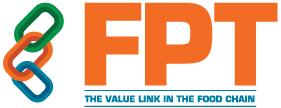Pellet Frying Line
Pellet frying lines produce semi-finished expandable snack food items using the extrusion process. These pellet snacks come in a variety of colours, sizes, flavours, textures, and flavours. Pellets generally have a crispier and denser feel than directly extruded meals. Manufacturers and customers of pellet frying lines can expand semi-finished snack pellets in a variety of ways, including hot oil frying, hot air popping, baking, or roasting.
However, two of the most frequent processes for converting snack pellets into finished ready-to-eat (RTE) forms are hot air expansion and hot oil frying. The use of hot air to convert snack pellets is deemed healthful since it eliminates the use of excessive oil and the development of acrylamide.
Food items cooked and processed in an extruder and forced out through a die at temperatures below 100 °C are known as pellets frying lines. At low temperatures, the form of the dough prevents water from blowing up and turning into steam, allowing delicate shapes to be created in pellets that would otherwise be destroyed in the direct expanded extrusion method.
The Pellet frying line products for corn, potato, and tubers are extruded at 25%–35% moisture and subsequently dried to roughly 12% moisture for stability. Because the pellet frying line food product is still thick and unexpanded at this stage, drying must be done at low temperatures with high humidity to allow the moisture to escape.
For creating semi-finished pellet snack meals, a variety of starch-based raw materials are employed, including cereal flours (Corn, Wheat, Rice, etc.) and root starches (Potato and Tapioca). The ability to create recipes with unique properties, such as high fibre content, multi-grain, or multi-coloured snacks, is a significant benefit of pellet frying line technology. These raw resources are inexpensive and widely available across India.
This is one of the many reasons why pellet chip snack manufacturing and packaging machinery and equipment with increased capacity are in higher demand in India. The other aspect, rising public knowledge about health and the consumption of nutritional contents through ready-to-eat foods, is responsible for research and development activities as well as the penetration of new varieties of snack products into the market. As a result, the snack pellets market in India is one of the fastest-growing sectors, with a high growth tendency over the previous decade.
Process of Pellet Frying Line
Intake of pellets and frying
The Pellet Frying Line is made up of a pellet receiving and feeding system that allows the operator to feed pellets from the floor. The product is then sent to the vibrating sieve through the pellet feeding elevator. This maintains a steady flow into the fryer while sieving tiny particles. The pellet fryer aids the maker in producing any form of pellet snack as quickly as feasible. Its ingenious product belt delivers the product while ensuring that the system uses the least amount of oil possible.
Electrical or thermal oil can be used to heat the frying oil. After frying, a defatting belt allows excess frying oil on the product surface to drain off. The belt provides a midway tipping point for irregularly shaped products. After that, the dripping frying oil is returned to the fryer. Air knives can be used to remove even more oil. After that, the product is passed into the flavouring equipment. This is a self-contained, drum-shaped mixing mechanism with precise speed and flavour or salt dosing controls. The device is equipped with a control panel.
Due to starch gelatinization, snacks manufactured in Pellet frying lines have a transparent look. Pellet chip snacks can then be extended by fast heating them so that the water in the snacks explosively turns into steam, puffing the pellet snacks. This can be accomplished by deep-frying in hot oil, hot air-popping, baking, or microwaving, then seasoning and packaging. Because it is less costly and effective, hot oil frying is the most frequent way of enlarging semi-finished pellet chip snacks.
The thickness, shape, and content of the pellets determine the frying conditions. Temperatures for frying are normally between 170 and 210 °C for 10–60 seconds. Baking and microwaving methods of expanding and creating low-oil pellet snack items have been employed. The conventional snack dries out due to the quick heat transfer rates necessary to inflate a pellet consistently, and a baking oven will not puff a pellet. As a result, pellet microwaving needs a fast heat transfer rate, and commercially available high-powered continuous microwave expanders are employed. The moisture level of expanded pellet chip snacks is 1–2%. Direct expanded goods are normally flavoured in coating drums.
Features of Pellet frying line
SOLUTION FOR FRYING PELLETS IN A UNIQUE WAY
Rosenqvists' Pellet Frying Line allows for gentle handling and homogeneous frying of a variety of pellet snacks, ranging from rings to 3-dimensional goods. The unique Pellet frying line by rosenqvists is available in three sizes with outputs ranging from 100 to 750 kg/h and has the lowest total oil volume of any pellet fryer on the market.
PERFORMANCE
The overall oil volume of the rosenqvists pellet frying line is extremely low, with the lowest model having just 87 litres and a capacity of up to 150kg/h. Because of the low oil amount, excellent rotation rates of only 2-4 hours are possible, enhancing product quality and increasing shelf life. The fryer's oil level is also automatically regulated for extra convenience.
OPERATION
The Pellet Frying Line System is intended to provide you with the most flexibility possible when it comes to producing high-quality snacks. The Pellet frying line simply and effectively handles a broad variety of pellet products, from rings to more complicated 3-dimensional treats. The pellets will be consistently cooked thanks to the adjustable frying duration from 8 to 40 seconds and the unique and state-of-the-art frying wheel design.
The temperature of the oil is maintained and controlled by a sophisticated controller. An inclined elevator is used to handle the most delicate items, while a vibratory conveyor with a built-in screen is used to remove minute bits. Before seasoning, the fried product runs via an oil-drip-off belt after leaving the fryer. The installation is straightforward since all pipelines between the oil supply tank have been pre-assembled.
Indian pellet frying industry
Pellet frying line snacks provide a handy snacking alternative for brands and manufacturers. Pellet chips are semi-finished snacks food, which means that once produced by a pellet snacks frying machine or a fully automatic potato chips frying line, automatic chips fryer or potato chips plant, pellet chips frying line, wheat pellet frying machine, corn pellet frying machine, potato pellet frying machine, snacks food customers can manufacture and cook these pellet chips snacks into finished innovative food products by mixing them with other ingredients.
Because each snack consumer has different taste preferences, semi-finished unexpanded pellet snacks meet those needs by combining spices and other ingredients during the expanding process to create completed eatables.
Not only can pellet snacks meet individual tastes, but they also meet the demands of diverse communities, nationalities, regions, genders, and age groups by combining spices and extending methods such as hot oil frying, air-popping, baking, or roasting with spices of their choosing. Factors such as increased disposable money and the consumption of small meals aided the snack industry's quick expansion.
When frying extruded and pelleted snacks, it's critical to keep the process natural while keeping taste, colour, scent, and crispiness to capitalise on your local market and beat the competition. Regardless of increased production numbers, a frying solution must ensure that each individual pellet snack is processed with care.
The demand for healthy and tasty pellet snacks has increased as customers' living standards have risen and the savoury snacks market has become more globalised. Another factor driving demand for semi-finished pellet snacks in India is customers' busy lifestyles, along with the better taste, ingredients, and flavour of a variety of new snack items.
The Indian snack pellet industry is also booming, thanks to the wide range of goods available in terms of tastes, colours, and flavours. Many developments in food extrusion techniques are occurring as a result of technological advancements. These advancements enable businesses to generate a vast quantity of snack pellets in a variety of forms, textures and sizes at a cheap cost.
Our Principal
Kiron Food Processing Technologies, in collaboration with Rosenqvists, offers a comprehensive Pellet Frying Line solution.
Rosenqvists Food Technologies AB was founded in 2009 by a group of professionals with extensive expertise in the creation and construction of processing lines for the potato processing and snack food sectors.








